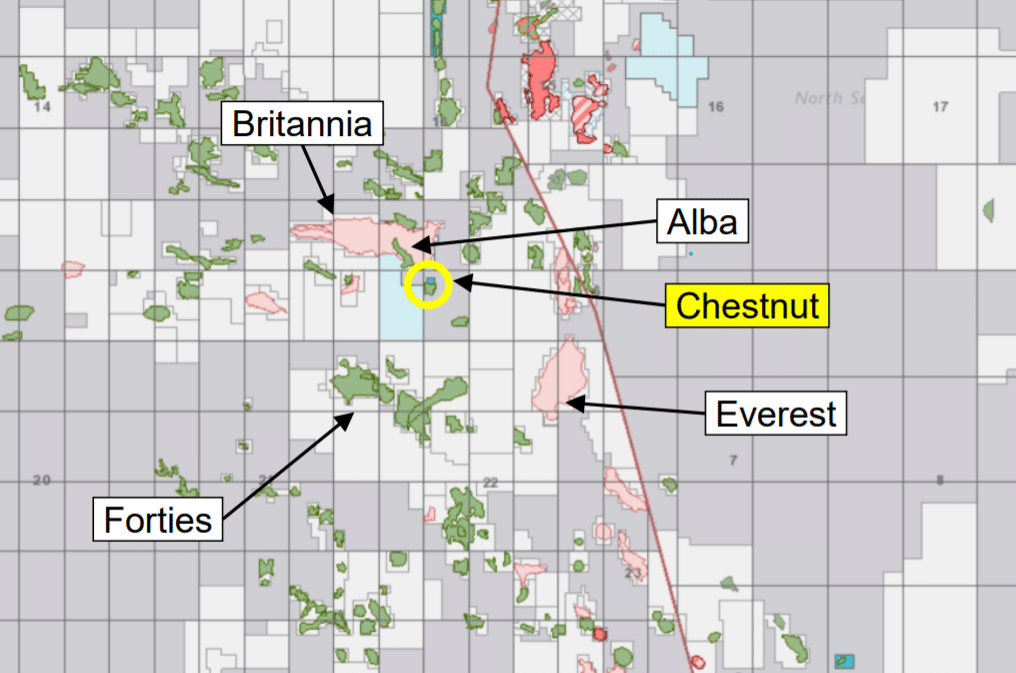Drilling wells on Chestnut has proven to require a multi-disciplinary approach in order to identify infill targets. At the recent digital Devex Conference, senior geologist Alex Stuart from Spirit Energy gave an excellent update on the history and status of the field. Chestnut is operated by Spirit Energy and partnered by Dana Petroleum.
Located in block 22/2, the reservoir sands of the Chestnut field may have been originally deposited as the terminal lobe of the Eocene Alba field sands to the northwest. However, subsequent remobilisation of the sands took place and two levels of injectites now constitute the main reservoirs of the field. These are homogenous, world class reservoirs with complex geometry.

A total of thirteen wells and associated sidetracks have so far been drilled on Chestnut, with currently three producers and one injector being active. The thickness of the sands is variable but rarely exceeds 75 feet and together with complex injectite geometries poses challenges to properly imaging the reservoir using seismic. A good example of drilling such a complex reservoir was production well 22/02a-18. This well was drilled in 2017 and encountered a reservoir but with geometry that was not entirely as anticipated.
Based on seismic data, the well path was expected to be drilling straight through a flatter area of Nauchlan reservoir. However, after drilling the first section of sand, the bit exited the reservoir as pictured in the schematic below. The company was using a deep resistivity tool, which suggested that the reservoir dipped down and up again. This was used to geosteer back towards sands in the toe of the well. The well was completed and has been a successful producer for the field since. This deep resistivity data suggested that there was still significant uncertainty with seismic positioning of the reservoir sands.

As a result, the seismic data was then reprocessed and inverted in 2018 to try and improve the imaging of the reservoir sands (see upper left in figure above). This reprocessing was successful in providing significant uplift to the old seismic data sets. Using this new data, well 22/02a-19Z was drilled, which encountered a good section of 650 ft pay. This latest well tested the field margins in the injectite wings and was a great test of the latest seismic data. No geosteering or adjustments were made to the well path during operations as the seismic correctly positioned the sands at this location.
These new wells and field production optimisation have arrested production decline and maximised value from the field. Future subsurface work is incorporating the new data with a focus on defining potential opportunities in the injectite wings on the field margins.
HENK KOMBRINK






